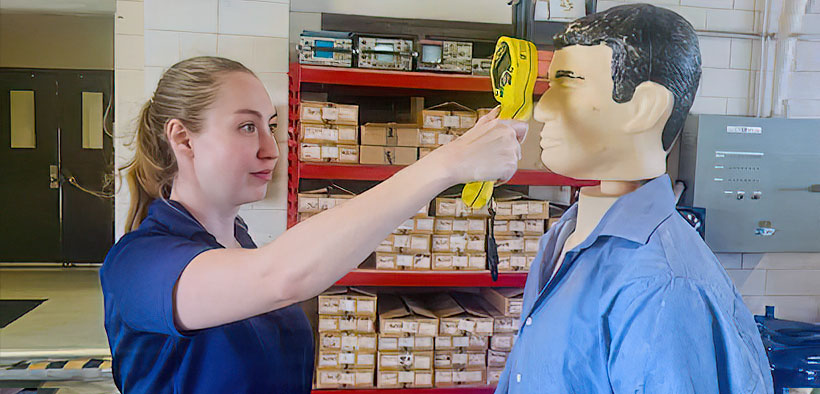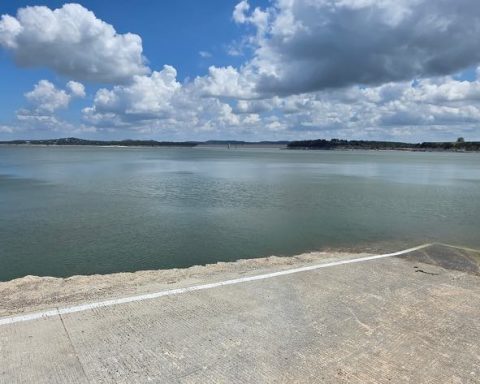Comal County’s Public Health Department is waging war on COVID-19 and the flu with outreach clinics focused on the importance of vaccines.
But Public Health’s also preparing for a very different battle — saving lives in the aftermath of a terrorist attack involving radiological weaponry.
At the suggestion of the Administration for Strategic Preparedness and Response (ASPR), an operating agency of the U.S. Public Health Service within the Department of Health and Human Services, staff this week completed special training which included learning how to tell if someone is suffering from radiation contamination.
Public Health Emergency Preparedness Coordinator Gentrea Hendrickson (pictured above) learned how to use a special radiological detector to scan people for levels of radiation.
“There has been a big push from ASPR’s assistant secretary for Preparedness and Response to increase radiological response capabilities in public health nationwide,” she said. “Not necessarily nuclear but more focused on radiological terrorism. This seems to be related to both the situation in Ukraine and to the increase in domestic terror incidents in the United States over the past few years.”
“I’ve been working on our radiological response plan for about a year now, and liaising with state partners to coordinate our respective protocols,” Hendrickson said.
Jennifer Conger, a communications specialist with Public Health, recently completed “infinite command-center training” to learn best practices for communicating with the public and media in the aftermath of any type of disaster.
Public Health employees also have trained to respond to active shooters, outbreaks like COVID-19, chemical and biological terrorism, and medical management of victims.




